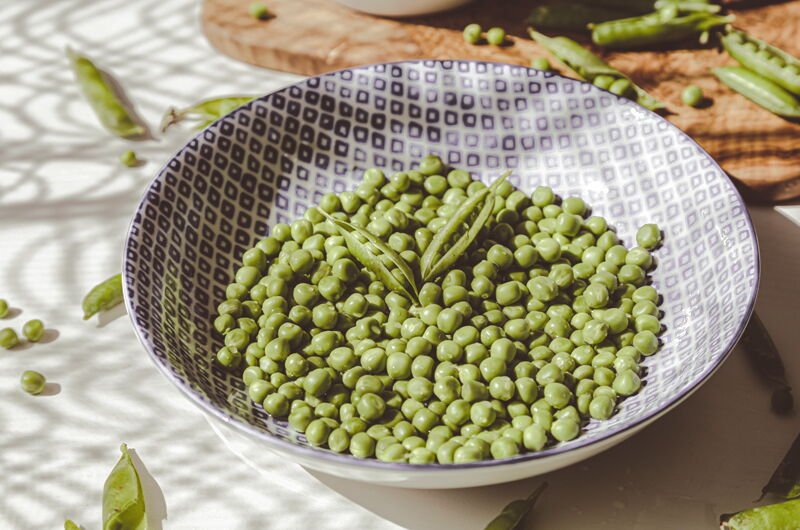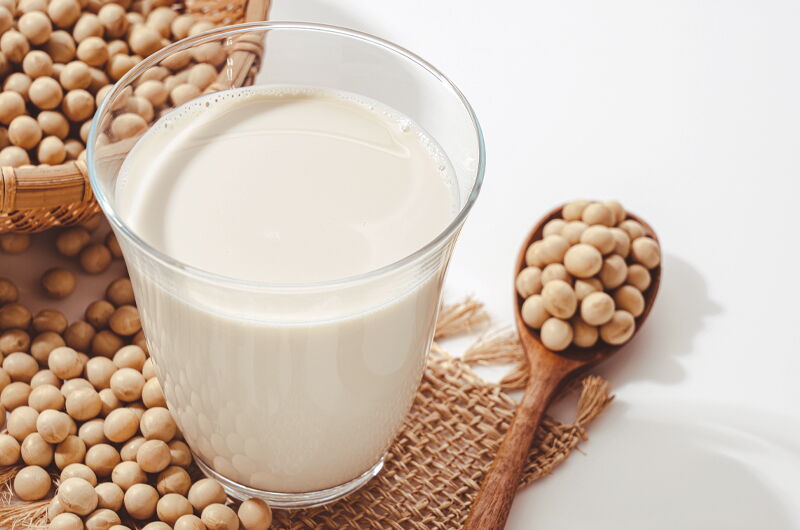Proteins are an extremely popular nutrient among consumers. They are often identified in relation to fitness, low-carb diets and as a key component in a healthy, nutrient-rich diet. All this makes Protein one of the most sought after nutrients and offered in numerous forms by manufacturers. The huge demand has increased research and product development leading to an expansion of the use of Protein of animal origin in different forms and to innovation around the use of vegetable Protein which are emerging as an increasingly competitive supplement.

Plant-based diets, and more specifically plant Protein, have been the subject of growing interest from researchers and consumers due to their potential health benefits and positive environmental impact. Of course, plant Protein are found in plant foods, and the positive health benefits are linked to Fibre, vitamins, minerals, and phytochemicals.
Plant-based diets are routinely linked to reductions in the risk of developing cancer, type 2 diabetes and cardiovascular disease. Furthermore, many proponents of plant Protein highlight a higher level of economic sustainability than is observed with diets that are predominantly animal Protein. About 60% of dietary protein consumed worldwide comes from plant sources with around 4 billion people worldwide consuming a primarily plant-based diet.

Structurally, many high-quality Protein contain all essential amino acids in a distribution that helps cellular protein synthesis (i.e. high biological value Protein). The two common methods for determining the quality of Protein are to calculate the proportion of nitrogen retained (the higher the proportion of nitrogen retained, the greater the use of Protein and, therefore, the higher the quality of the Protein) and to compare the protein with the egg protein (albumin), which is known to have an almost perfect distribution of essential amino acids. It is also important to consider that the combination of different types of food can affect the quality of the protein. Per example, legumes and grains are each low in some essential amino acids. However, combining legumes and grains in a single meal improves the quality of the Protein delivered, a complementary protein strategy followed by many cultures, with common dishes combining beans and rice, or beans and corn. Other values to consider when evaluating a protein are:
- Biological value (BV)
- Net Protein Utilization (NPU).
These measure the amount of nitrogen excreted by people, thereby determining the bioavailability of the protein.
All three scales are based on two assumptions, both disputed:
- dietary protein is the body's only source of nitrogen;
- all non-excreted Protein were used to make body Protein.
Indeed, some of the Protein we ingest can and do convert into glucose, especially if protein digestion is fast and the body's glycogen stores are low, and some can be fermented by our microbiota, especially if protein digestion is slow.
A protein is said to be complete when, in proportion to its overall amino acid content, it has a sufficient amount of each EAA. The main advantage of animal Protein is that most of them are complete.
Conversely, most vegetable Protein are incomplete, but some such as soy, pea and rice Protein are almost complete: rice is relatively low in lysine; soy and pea, in methionine. Of course, incomplete Protein can complement each other as mentioned above, also thanks to the use of food combinations and some supplements. The amino acid profile of a pea: rice 70:30 protein blend is very similar to that of whey.
Although peas and rice are gaining popularity, alone and in combination, soy still remains the most popular vegan source of protein powder.
Soy protein is the most popular plant protein and is considered a good source of protein, the isolated versions are excellent and should be considered a complete protein.

Soy has an intermediate digestion rate (faster than casein, slower than whey) and an excellent antioxidant profile (high levels of isoflavones, saponins and copper. Vegetarians, and especially vegan athletes, should take this seriously consider adding soy to their diet to compensate for increased protein requirements and their relative lack of essential amino acid content. Soy contains glycosides isoflavones, which are linked to favorable outcomes related to bone health and metabolism of cholesterol.
Bibliography
Lynch, H.; Johnston, C.; Wharton, C. Plant‐Based Diets: Considerations for Environmental Impact, Protein Quality, and Exercise Performance. Nutrients 2018, 10, doi:10.3390/nu10121841.
FAOSTAT. Food Balance Sheets; Food and Agriculture Organization of the United Nations Statistics Division: Rome, Italy, 2013
Macfarlane GT, Macfarlane S. Bacteria, colonic fermentation, and gastrointestinal health. J AOAC Int. (2012)
MacLean DA, Graham TE, Saltin B. Branched-chain amino acids augment ammonia metabolism while attenuating protein breakdown during exercise. Am J Physiol. (1994)
Reidy PT, Walker DK, Dickinson JM, Gundermann DM, Drummond MJ, Timmerman KL, Fry CS, Borack MS, Cope MB, Mukherjea R, Jennings K, Volpi E, Rasmussen BB. Protein blend ingestion following resistance exercise promotes human muscle protein synthesis. J Nutr. 2013 Apr;143(4):410-6. doi: 10.3945/jn.112.168021. Epub 2013 Jan 23. PMID: 23343671; PMCID: PMC3738242.
Setchell KD. Phytoestrogens: the biochemistry, physiology, and implications for human health of soy isoflavones. Am J Clin Nutr. 1998 Dec;68(6 Suppl):1333S-1346S. doi: 10.1093/ajcn/68.6.1333S. PMID: 9848496.
Wong WW, Smith EO, Stuff JE, Hachey DL, Heird WC, Pownell HJ. Cholesterol-lowering effect of soy protein in normocholesterolemic and hypercholesterolemic men. Am J Clin Nutr. 1998 Dec;68(6 Suppl):1385S-1389S. doi: 10.1093/ajcn/68.6.1385S. PMID: 9848504.
